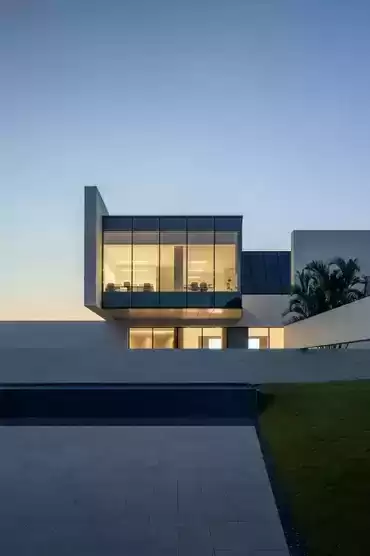Architecture trends after the pandemic
Architecture trends after the pandemic
In the past two years, the world has been forced into many changes in society under the pandemic,
which may have helped prevent many deaths.
But many other aspects of our culture have already changed in ways that predates the pandemic. Gradual shifts,
once COVID-19, have become immediate and widespread.
Telecommuting, distance learning, online and retail shopping dominance,
and an obsessive focus on health and wellbeing.
All this and more, is now an essential aspect of our daily lives,
and similar changes have taken place in architecture.
The aesthetic revolution of international scholastic modernism exploded in America before World War II,
and it became the aesthetic failure to acknowledge and eventually be seen as the future of the profession.
But radical movements change when they can’t stand their expectations.
The militants were religious fanatics who came to America and then, over a century, turned into parishioners.
Architecture trends after the pandemic
The Marxists of the nineteenth century became communists of the twentieth century,
and now what was largely communist has turned into a socialist state.
If the past is a precursor, the pandemic may provide a focal point at which transformative change becomes possible.
Radicalism was born in modernity, and the orthodoxy of modernity’s aesthetics prevailed unchallenged for several generations,
and this hypothetical outcome may change.

Architecture trends after the pandemic
Just as the hard-liners and Marxists had compelling ideas for a minority of those they sought to save,
their ideas were no longer relevant to anyone else.
The Internet allows a mass reaction to elite design. There are no governing institutions, magazines,
or museums to determine a preferred way of making architecture at the expense of others.
Everyone can talk to anyone, now for free, ideas are raised, responses are received,
and discussion happens instead of downward from the ‘expert class’.
The recent rethinking of what we want from our homes has not been led by any architecture firm or landlords.
But by people who decide that what they have is not what they want or need.
Architects are beginning to look at what they value,
how what they want and what they value can manifest not as ‘style’, but as the basis for creating buildings and communities.
Architecture trends after the pandemic
And this healthy change has been powered in part by these past two years,
so much has been closed in 2020 that most architects have felt the tightness of construction and a significant drop in bills that hasn’t been reversed for six months.
Architecture trends after the pandemic
Then the “Covid bubble” arrived, when design and construction activity exploded for many and it lasted until the end of 2021,
when bills for most architects returned to flat status.
Although regions are different, the epidemic is global,
so this was a unique two-year moment when everyone was sitting in the same leaky boat.
Construction is primarily a personal on-site exercise, and is classified as an “essential activity” during the 2020 closures.
So any architect who builds anything has been busy,
but economic uncertainty often leads to the halting or termination of commercial projects or residential work in cities.
The past year has seen the recession become a boom, as interest rates remain low and desire grows at a time of uncertainty.
Now, as in 1920, when the influenza pandemic waned, Covid is slowly becoming more of a nuisance and less of an immediate horror.
What does this mean for design?
Since the Great Recession of 2008,
the boom economic model’s roller coaster has worsened the collapse of the construction world into continuity lower than boom and higher than crash.
This decade was essentially boring activities with no clear direction, eminent architects were dying,
and there were no new champions offering anything but a widely applied upsurge in modernity.
Of course there have been continuous improvements to sustainability and ‘flexibility’,
and fashionable marketing fads like ‘3D printing’ or ‘small homes’.
The pandemic has shattered this shaky status quo,
but these two years have yet to reveal any coherent path forward, and worse,
they have distracted everyone from the growing and grueling reality of climate change.

Architecture trends after the pandemic
Academic enrollment in architecture was strong and steady before the pandemic,
with around 27,000 students during the 2019-20 academic years.
About 30,000 architectural jobs were then eliminated in 2020,
and a third of those jobs came back in 2021, with a lack of narratives on the jobs that now plague the profession.
However, the culture of architecture has been forever changed by digital technology,
with more than 200,000 architects and 27,000 architecture students finding each other rather than searching for an architectural institution.
Some internet sites run live streams and podcasts daily, bypassing established places for top-down communication.
Architect Evelyn Lee also focuses on new and evolving ways to use an architecture degree and make things into practice for broken podcasts.
And when the Great Recession destroyed advertising revenue for publication and restricted the criticism that PR architects and photographers had,
an ancient way of promoting architecture was hacked.
That same moment saw the immediate availability of smartphones, with insanely good cameras,
huge memory, and powerful portability.
This digital revolution has transformed animators into artists,
where anyone can now take photos and videos and tell any depiction, anywhere, instantly, often for free, and share it globally.
Organizations are both shaped and changing, taking advantage of these new technologies,
so the use of virtual meetings will change to fit its limits once this pandemic subsides.
For a century in architecture, the canon of modernist orthodoxy compressed aesthetic diversity,
and for just one decade was threatened by the now despised PoMo revolution.
But the time when the consensus elite owned the exclusive communication tools,
creating an “expert class” for dissemination, communication and recognition, is over.
Our culture is constantly finding new language and new ways to talk to each other,
especially in unprecedented times, when real change is happening.






